What is a Full Wave Rectifier : Circuit with Working Theory
If you know what is a rectifier, then you may know the ways to reduce the ripple or voltage variations on a direct DC voltage by connecting capacitors across the load resistance. This method may be suitable for low power applications, but not for applications that need a steady and smooth DC supply. One method to improve on this is to use every half-cycle of the input voltage instead of every other half-cycle waveform. The circuit which allows us to do this is called a Full Wave Rectifier (FWR). Let’s see the full-wave rectifier theory in detail. Like the half-wave circuit, the working of this circuit is an output voltage or current which is purely DC or has some specified DC voltage.
What is a Full Wave Rectifier?
A semiconductor device that is used to change the complete AC cycle into pulsating DC is known as a full-wave rectifier. This circuit uses the full wave of the i/p AC signal whereas the half-wave rectifier uses the half-wave. This circuit is mainly used to overcome the drawback of half-wave rectifiers like low-efficiency drawback.
Full Wave Rectifier Circuit
These rectifiers have some fundamental advantages over their half-wave rectifier counterparts. The average (DC) output voltage is higher than for the half-wave rectifier, the output of this rectifier has much less ripple than that of the half-wave rectifier producing a smoother output waveform.
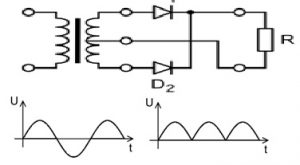
Full Wave Rectifier Theory
In this circuit, we use two diodes, one for each half of the wave. A multiple winding transformer is used whose secondary winding is split equally into two halves with a common center-tapped connection. Configuration results in each diode conducting in turn when its anode terminal is positive with respect to the transformer center point C produces an output during both half-cycles. The advantages of this rectifier are flexible compared to that of a half-wave rectifier.
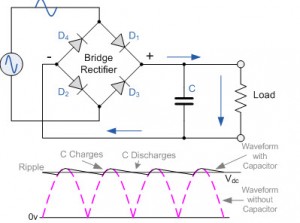
This circuit consists of two power diodes connected to a single load resistance (RL) with each diode taking it, in turn, to supply current to the load resistor. When point A of the transformer is positive with respect to point A, diode D1 conducts in the forward direction as indicated by the arrows. When point B is positive in the negative half of the cycle with respect to C point, the diode D2 conducts in the forward direction and the current flowing through resistor R is in the same direction for both half-cycles of the wave.
The output voltage across the resistor R is the phasor sum of the two waveforms, it is also known as a bi-phase circuit. The spaces between each half-wave developed by each diode are now being filled in by the other. The average DC output voltage across the load resistor is now double that of the single half-wave rectifier circuit and is about 0.637Vmax of the peak voltage by assuming no losses. VMAX is the maximum peak value in one half of the secondary winding and VRMS is the RMS value.
Working of Full Wave Rectifier
The peak voltage of the output waveform is the same as before for the half-wave rectifier provided each half of the transformer windings have the same RMS voltage. To obtain a different DC voltage output different transformer ratios can be used. The disadvantage of this type of rectifier circuit is that a larger transformer for given power output is required with two separate but identical secondary windings makes this type of full-wave rectifying circuit costly compared to the FW Bridge Rectifier circuit.
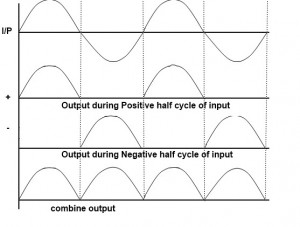
This circuit gives an overview of the working of a full-wave rectifier. A circuit that produces the same output waveform as the full-wave rectifier circuit is that of the Full Wave Bridge Rectifier. A single-phase rectifier uses four individual rectifying diodes connected in a closed-loop bridge configuration to produce the desired output wave. The advantage of this bridge circuit is that it does not require a special center-tapped transformer, so it reduces its size and cost. The single secondary winding is connected to one side of the diode bridge network and the load to the other side.
The four diodes labeled D1 to D4 are arranged in series pairs with only two diodes conducting current during each half-cycle duration. When the positive half cycle of the supply goes, D1, D2 diodes conduct in a series while diodes D3 and D4 are reverse biased and the current flows through the load. During the negative half-cycle, D3 and D4 diodes conduct in a series, and diodes D1 and D2 switch off as they are now reverse-biased configuration.
Current flowing through the load is the unidirectional mode and the voltage developed across the load is also unidirectional voltage, same as for the previous two diodes full-wave rectifier model. Therefore the average DC voltage across the load is 0.637V. During each half-cycle, the current flows through two diodes instead of just one diode, so the amplitude of the output voltage is two voltage drops 1.4V less than the input VMAX amplitude, ripple frequency is now twice the supply frequency 100Hz for a 50Hz supply or 120Hz for a 60Hz supply.
Types of Full Wave Rectifier
These are available in two forms namely center tapped full wave rectifier and bridge rectifier circuit. Each type of full-wave rectifier includes its own features so these are used in different applications.
- Center Tap Full Wave Rectifier
- Full-Wave Bridge Rectifier
Center Tap Full Wave Rectifier
This kind of rectifier can be built with a tapped transformer through secondary winding where AB tapped at the center point ‘C’ & two diodes like D1, D2 are connected in the upper and lower portion of the circuit. For signal rectification, the D1 diode uses the AC voltage which appears across the upper side of the secondary winding whereas the D2 diode uses the lower of the winding. This kind of rectifier is extensively used in thermionic valves & vacuum tubes.
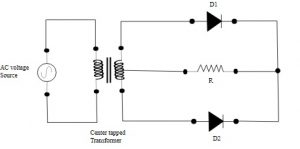
The center tap full-wave rectifier circuit is shown below. In the circuit, the AC voltage like Vin flows across the two terminals like AB of the transformer’s secondary winding once the AC supply is enabled.
Full-wave Bridge Rectifier Circuit
A Bridge Rectifier full-wave rectifier can be designed with four rectifying diodes. It doesn’t use any center tapping. As the name suggests, the circuit includes a bridge circuit. The connection of four diodes in the circuit can be done in the pattern of a closed-loop bridge. This rectifier is less cost and smaller in size because of no center-tapped transformer.
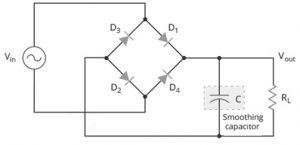
The diodes used in this circuit are named D1, D2, D3 & D4 where two diodes will conduct at a time instead of four like D1 & D3 or D2 & D4 based on the upper half cycle or lower half cycle fed to the circuit.
Difference between Full Wave Rectifier and Half Wave Rectifier
Based on different parameters, the difference between the full-wave and the half-wave rectifier is discussed below. The difference between these two rectifiers includes the following.
| Half Wave Rectifier | Full Wave Rectifier |
| Half wave rectifier current only during the positive half cycle of the applied input, therefore, it shows unidirectional characteristics. | Full-wave rectifier, both the halves of the input signal is utilized at the same time of operation, therefore it shows bidirectional characteristics. |
| This half-wave rectifier circuit can be built using one diode | This full-wave rectifier circuit can be built with two or four diodes |
| The transformer utilization factor for HWR is 0.287 | The transformer utilization factor for FWR is 0.693 |
| The basic ripple frequency of the HWR is ‘f’ | The basic ripple frequency of the FWE is ‘2f’ |
| The peak inverse voltage of the half-wave rectifier is high with the supplied input value. | The peak inverse voltage of the full-wave rectifier is double the supplied input value. |
| Voltage regulation of half-wave rectifier is good | Voltage regulation of half-wave rectifier is better |
| The peak factor of a half-wave rectifier is 2 | The peak factor of this rectifier is 1.414 |
| In this rectifier, transformer core saturation is possible | In this rectifier, transformer core saturation is not possible |
| The cost of the HWR is less | The cost of the FWR is high |
| In HWR, the center tapping is not required | In FWR, the center tapping is required |
| The ripple factor of this rectifier is more | The ripple factor of this rectifier is less |
| The form factor of HWR is 1.57 | The form factor of FWR is 1.11 |
| The highest efficiency used for rectification is 40.6% | The highest efficiency used for rectification is 81.2% |
| The average current value of HWR is Imav/π | The average current value of FWR is 2Imav/π |
Characteristics of Full Wave Rectifier
The characteristics of a full-wave rectifier are discussed below.
- Ripple Factor
- Form Factor
- DC Output Current
- Peak Inverse Voltage
- Root Mean Square Value of Load Current IRMS
- Rectifier Efficiency
Ripple Factor
The ripple factor can be defined as the ratio of ripple voltage and the pure DC voltage. The main function of this is to measure the existing ripples within the o/p DC signal, so based on the ripple factor, the DC signal can be indicated. When the ripple factor is high then it indicates a high pulsating DC signal. Similarly, when the ripple factor is low then it indicates a low pulsating DC signal.
Γ = √(VrmsVDC)2−1
Where, γ = 0.48.
Form Factor
The form factor of the full-wave rectifier can be defined as the ratio of RMS value of current and DC output current.
Form Factor = RMS Value of Current /DC Output Current.
For a full-wave rectifier, the form factor is 1.11
DC Output Current
The flow of current in both the diodes like D1 & D2 at the o/p load resistor like RL is in the same direction. So, the o/p current is the amount of the current in both the diodes
The current generated through the D1 diode is Imax/π.
The current generated through the D2 diode is Imax/π.
So, the o/p current (IDC) = 2Imax/π.
Where,
‘Imax’ is the max DC load current
Peak Inverse Voltage (PIV)
Peak inverse voltage or PIV is also known as peak reverse voltage. It can be defined as when a diode can withstand maximum voltage within the reverse bias state. If the applied voltage is higher as compared with the PIV, then the diode will destroy permanently.
PIV = 2Vs max
DC Output Voltage
The DC o/p voltage can appear at the load resistor (RL) and that can be given like VDC = 2Vmax/π.
Where,
‘Vmax’ is the max secondary voltage.
IRMS
The root mean square value of the load current of a full-wave rectifier is
IRMS= Im√2
VRMS
Root mean square value of the o/p load voltage of a full-wave rectifier is
VRMS=IRMS×RL=Im/√2×RL
Rectifier Efficiency
The efficiency of the rectifier can be defined as the fraction of DC o/p power & the AC i/p power. Rectifier efficiency indicates how efficiently converts AC into DC. When the rectifier efficiency is high then it is called a good rectifier whereas the efficiency is low then it is called an inefficient rectifier.
Η = Output(PDC)/Input(PAC)
For this rectifier, the efficiency is 81.2% and it is double as compared with a half-wave rectifier.
Advantages
The advantages of a full-wave rectifier include the following.
- As compared with the half-wave, this circuit has more efficiency
- This circuit uses both the cycles, so there is no loss within the o/p power.
- As compared with a half-wave rectifier, the ripple factor of this rectifier is less
- Once both the cycles employed in rectification then there is not lost within the i/p voltage signal
- You can use four individual power diodes to make a full-wave bridge, readymade bridge rectifier components are available off-the-shelf in a range of different voltage and current sizes that can be soldered directly into a PCB circuit board or be connected by spade connectors.
- The full-wave bridge gives us a greater mean DC value with less superimposed ripple while the output waveform is twice that of the frequency of the input supply. Therefore increase its average DC output level even higher by connecting a suitable smoothing capacitor across the output of the bridge circuit.
- The advantages of a full-wave bridge rectifier are that it has a smaller AC ripple value for a given load and a smaller reservoir or smoothing capacitor than an equivalent half-wave circuit. The fundamental frequency of the ripple voltage is twice that of the AC supply frequency 100Hz where for the half-wave it is exactly equal to the supply frequency 50Hz.
- The amount of ripple voltage that is superimposed on top of the DC supply voltage by the diodes can be virtually eliminated by adding a much-improved π-filter to the output terminals of the bridge. The low-pass filter consists of two smoothing capacitors of the same value and a choke or inductance across them to introduce a high impedance path to the alternating ripple component.
- The alternative is to use an off-shelf 3terminal voltage regulator IC, such as an LM78xx where “xx” stands for the output voltage rating for a positive output voltage or its inverse equivalent the LM79xx for a negative output voltage which can reduce the ripple by more than 70dB Datasheet while delivering a constant output current of over 1 amp.
- It is the basic component to get D.C voltage for the components which operate with D.C voltage. One can describe its working as a full-wave rectifier project.
- It is the heart of the circuit and it uses the diode bridge. Capacitors are used to get rid of ripples. Based on the requirement of D.C voltage.
Disadvantages
The disadvantages of a full-wave rectifier include the following.
- It uses four diodes to design the circuit
- This circuit is not used whenever a small voltage is necessary to be corrected because the connection of two diodes can be done in series & provides a double voltage drop because of their inside resistance.
- As compared with the half-wave, it is complicated.
- The peak inverse voltage of the diode is high, so these are larger and costlier.
- This rectifier is complex to place the center tap over the minor winding.
- The DC o/p is little because each diode uses simply one-half of the secondary voltages of the transformer.
Applications
The applications of a full-wave rectifier include the following.
- This kind of rectifier is mainly used for identifying the amplitude of the modulating radio signal.
- In electric welding, polarized DC voltage can be supplied through a bridge rectifier
- The bridge rectifier circuit is used in a power supply circuit for different applications because it can convert the voltage from high AC to low DC.
- These rectifiers are used to provide the power supply to the devices which function with DC voltage similar to LED and Motor.
Thus, this is all about an overview of a full-wave rectifier, circuit, working, characteristics, advantages, disadvantages, and its applications. Here is a question for you, what are the different types of rectifiers?

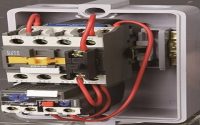
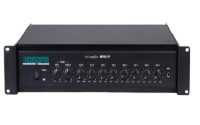
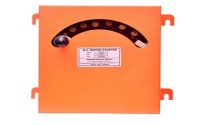
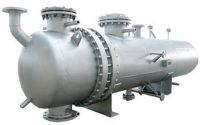
Comments are closed.